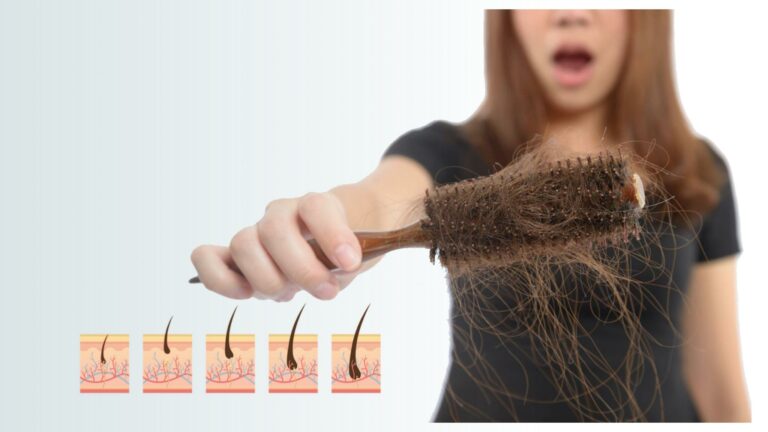
Hair Health – Why am I shedding like a chinchilla?
A patient came in recently and said they are losing “gobs” of hair in the shower. Upon physical examination of the scalp, there were no visible signs of thinning, nor even strands breaking loose as I tugged. To me, that was a textbook example of a good looking head of hair. However, the patient has a legitimate concern and has noticed more hair loss when they shower. Don’t brush this off. This is to be investigated.
According to hair expert, Lena Robertson, ND,1 “There are so many things to take into consideration when thinking about hair health including genetics, hormones, stress, nutrition, environment, and hair products to name a few.” It’s never a “one size fits all” approach.
She goes on to say, “While people often think of women as being the primary focus of hair health, it affects people of all genders and ages. Most people at some point in their life struggle with personal issues about their hair.”
The hair growth cycle consists of the anagen phase – active growing that can last 2-6 years, the catagen phase – transition from 1-2 weeks, and finally, the telogen phase – resting from 5-6 weeks before the body kicks out that hair and returns to anagen. On average, you should be losing 50-100 hairs a day.
There are three main types of hair loss:
- Non-scarring such as telogen effluvium, androgenic, alopecia areata, anagen effluvium, and chemotherapy-related.
- Scarring which includes lichen planopilaris, central centrifugal cicatricial alopecia, lupus, and radiation.
- Mixed such as trichotillomania and traction alopecia.
If you feel that you are losing your hair, don’t panic. There could be a variety of reasons why that is occurring. Research shows that several different types of alopecia can be slowed or reversed with nutritional protocols; however, there is no evidence that androgenic (male pattern baldness) can be treated nutritionally.2 Sorry, guys.
If you have a concern about hair health, book an appointment with your doctor to discuss your situation. You could be low in vitamins or minerals which lab work can show, and they can make sure you are on the right supplements. It could also be another underlying disorder, lifestyle, diet, or even the products you use. Don’t let it go until you are at your wit’s end and desperate for answers.
What can you do before you see your doctor? Don’t go out and spend a lot of money on supplements that you may or may not need. Consider this list of easy, at-home options from dermatologist Apple Bodemer, MD 3:
- Diet—rich in plant-based foods.
- Plenty of fiber and antioxidants.
- Adequate protein (not necessarily high protein!).
- Dairy avoidance/reduction.
- Oral hydration.
- Adequate good quality sleep.
- Regular exercise.
- Stress Management.
- Some form of mindfulness practice.
- Scalp stimulation with your hairbrush to increase blood flow.
May your hair be forever full and luscious!
Dr. Zimmerman
1 Dr. Lena Roberston, ND https://www.drlenarobertson.com/hair-health-focus/hair-health-focus-launch
2 Nutritional Medicine – 2nd edition, Gaby – Alopecia p715


